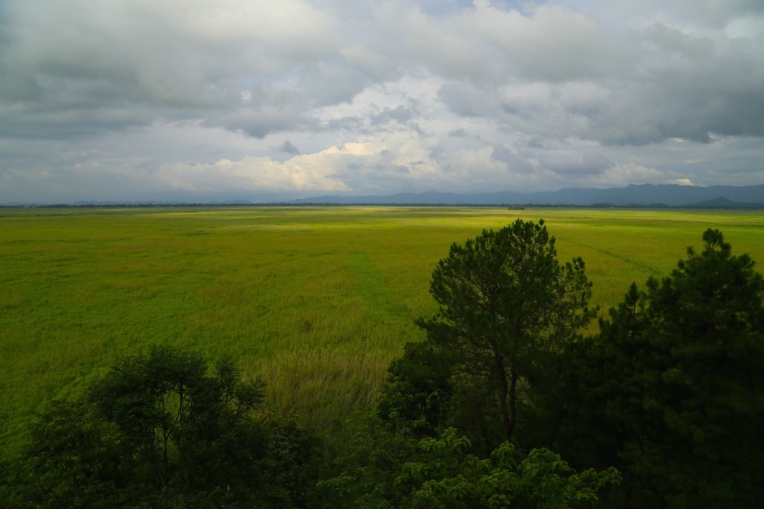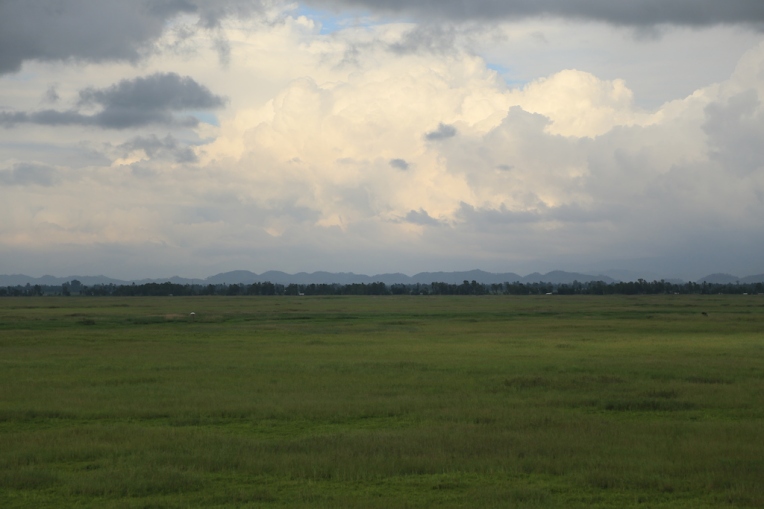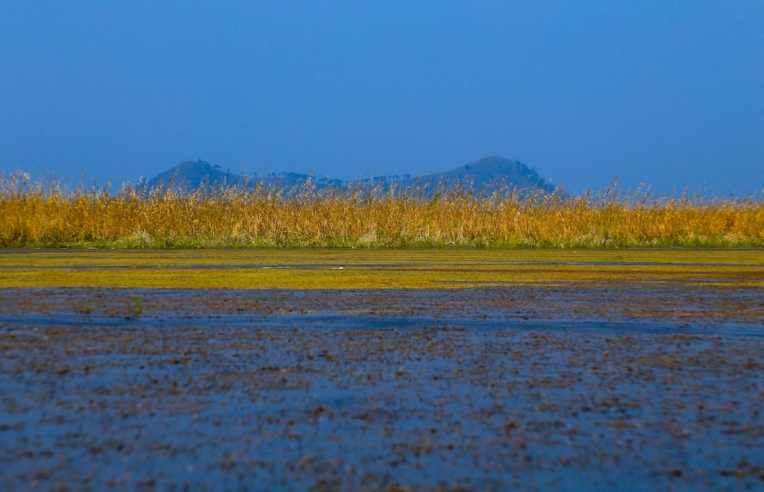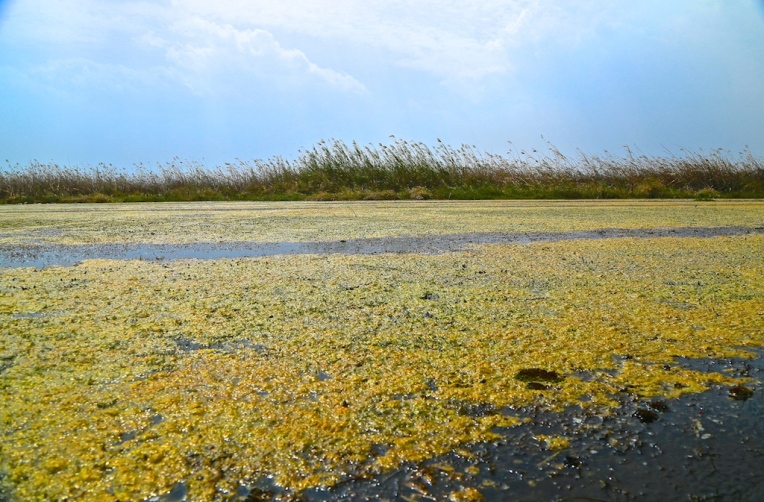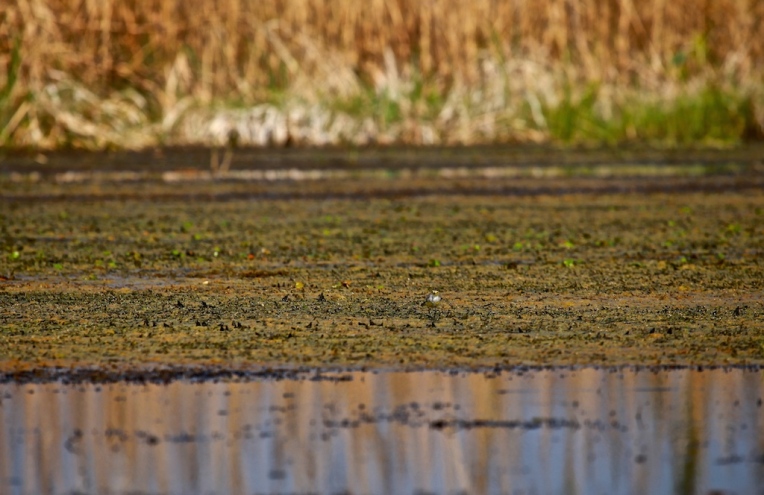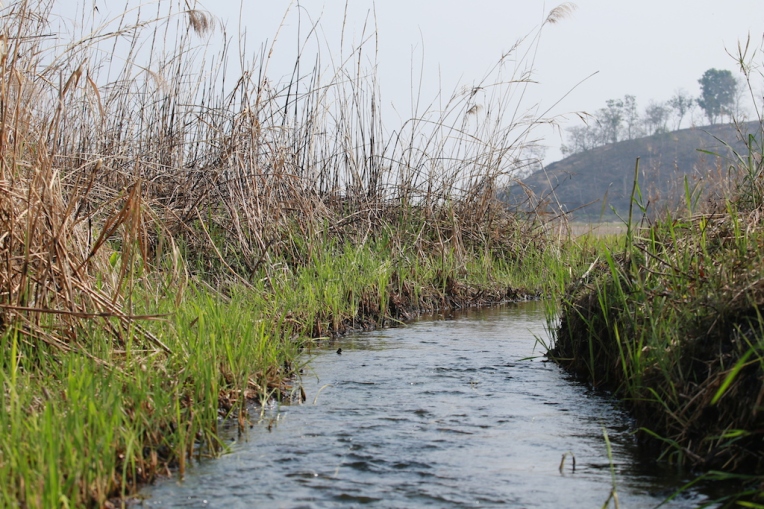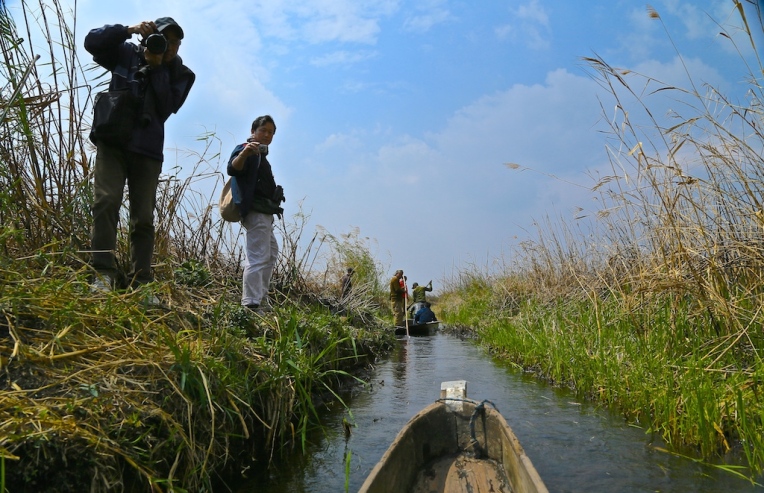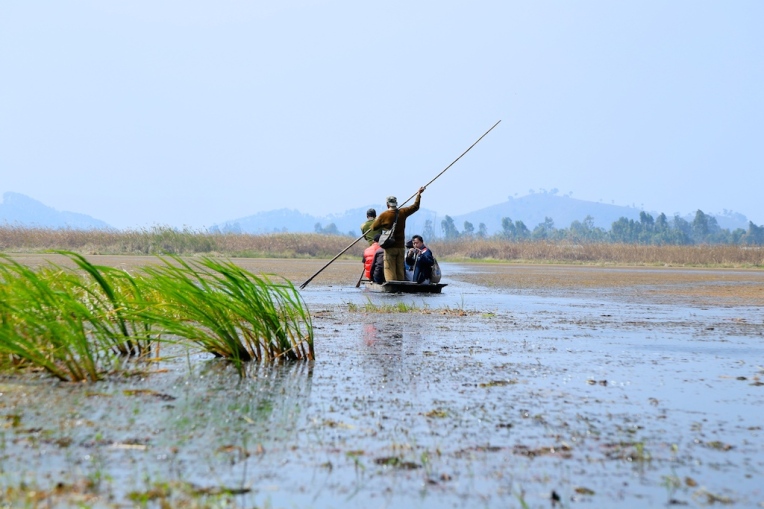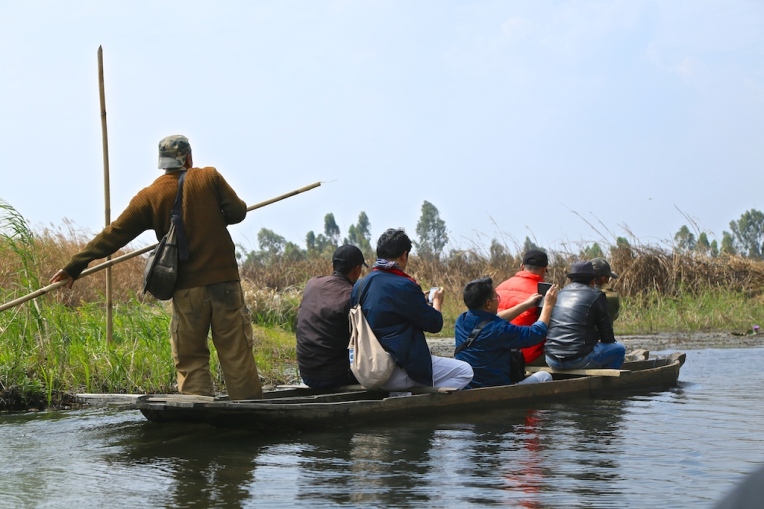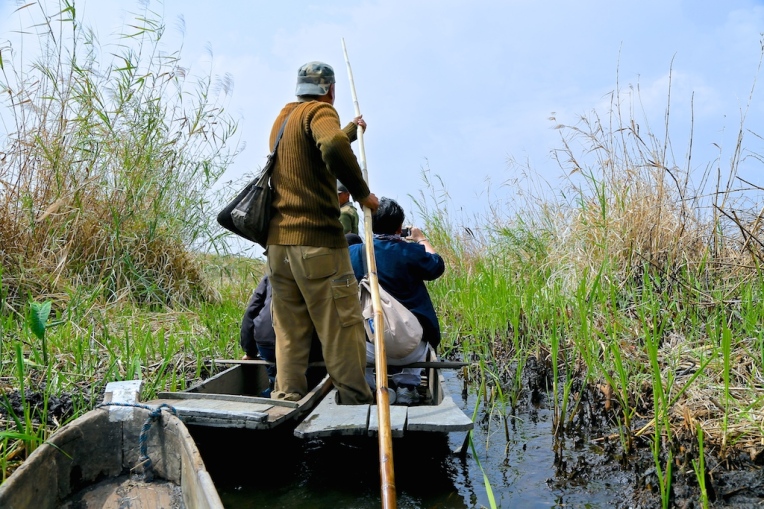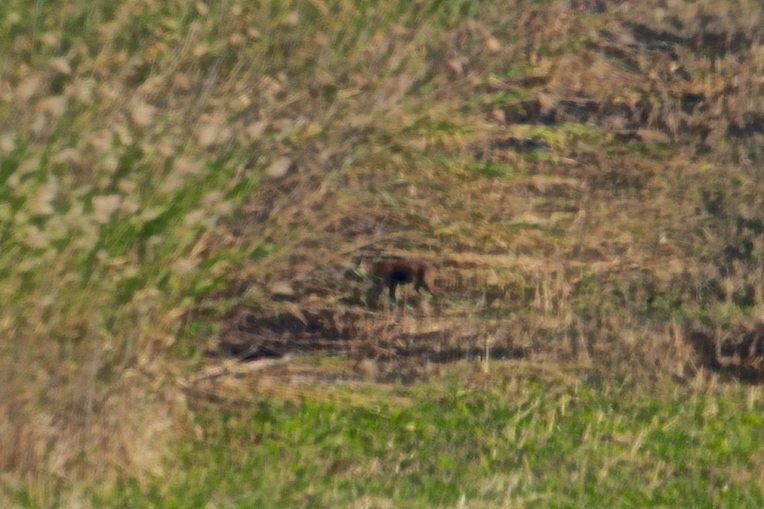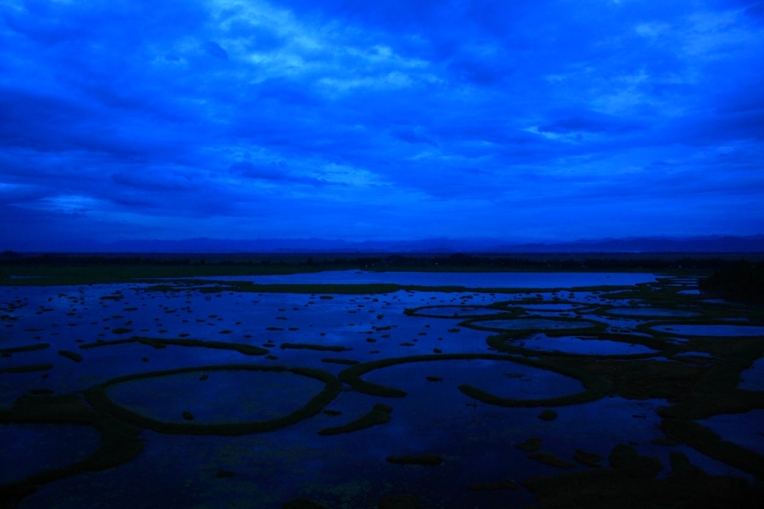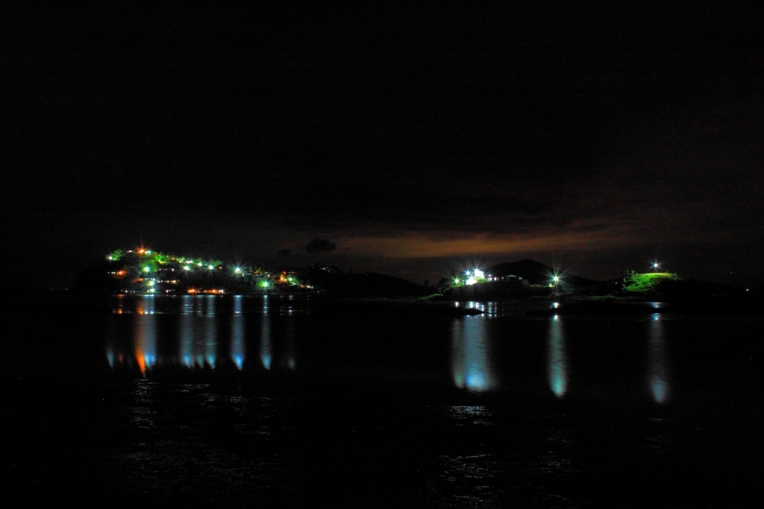What you see here are pictures of seemingly normal and regular landscapes that has hardly anything of interest other than being a picturesque scenery. But appearances can be deceptive. These are pictures of a very unique and fascinating wildlife sanctuary in Manipur (India) called the ‘Keibul Lamjao National Park‘ which is the only one of its kind in the whole world, the distinction being that it is actually a floating sanctuary !!! The grassland you see above is actually a massive bio-mass of various vegetation, soil and organic materials in various stages of decomposition and so thickly intertwined that it is almost like a landmass but actually floating on water! Secondly, it is also home to the very rare and endangered species of deer called the ‘Cervus eldi eldi’ or the ‘Brow-antlered-deer‘ that is endemic to this floating island and found nowhere else in the world.
The Keibul Lamjao National Park covers an area of approximately 40 square kilometres of which roughly 26 sq kms comprise the floating habitat of the magnificent Sangai (local name for the ‘Brow antlered deer’). The waterbody on which it floats is the largest freshwater lake in the whole of Northeast India. Known as ‘Loktak Lake‘, it hold special significance for the people of the region and is listed among BBC’s 14 most amazing bodies of water on our planet. Seen spread across the lake are smaller phumdis and on slightly bigger ones, one would come across hutments of fishermen that populates them. The phumdis are also used for fish farming by the local populace.
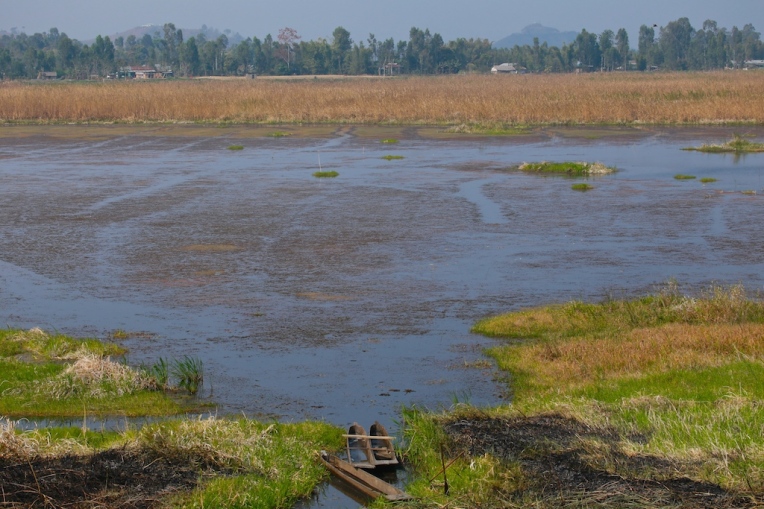
The only means of commuting in this massive waterbody amid the floating phumdis are the slender fisherman canoes that slices through in the narrow pathways between the phumdis . Perched on it precariously, we set off to find the very shy and elusive ‘Sangai’. Scientifically named the ‘Cervus eldi eldi’ after the British Officer Lt. Percy Eld who reportedly discovered it in 1844, this very rare species of deer was almost driven to extinction due to rampant poaching and neglect. Until a few years ago their number had dwindled to an alarming two digit figures numbering around 80 only but recent conservation efforts and growing awareness have brought the figures up again to three digit figures of 208 according to the last census in 2013. Even then occasional poaching incidents still continue to haunt these fine animals and checking it is a herculean task for the highly understaffed forest officials. At the time of the visit in March 2015, there was only 1 Ranger and 5 forest officials on regular employment who were aided by 27 other casual employees. These understaffed and unarmed forest guards often have to go up against heavy odds and even fight against armed poachers. Undoubtedly it is their love and regard for the magnificent animal that has been the diving force behind their dedication to the protection of the almost extinct animal. It is of utmost importance that measures are taken up to spread awareness and safeguard the conservation of this rare species that is found nowhere else in the world.
Coming back to our expedition,we were able to spot around 8 of the elusive animal which is a very good figure but unfortunately they were too far away for a clear shot (obviously camera 🙂 ). We were told that a large number had gathered at their playing ground near Pabot ching (a hillock in the middle of the sanctuary) early in the morning but by the time we reached there they had all retreated to the tall grasses that shelters them. A very far away shot zoomed in optimally could only get me a very hazy picture below. Even then it was exhilarating to see the fabled ‘Sangai’ in person, knowing the fact that it actually is in existence still. Of course there will be another day for our rendezvous and I shall be ready.
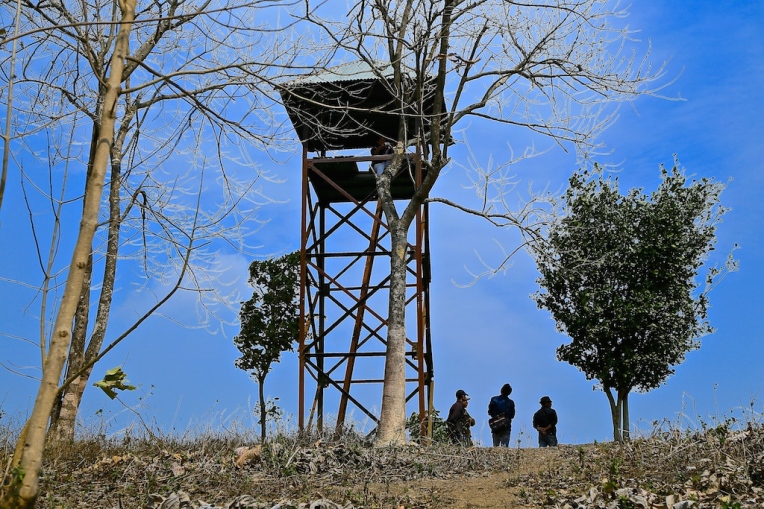
ly


